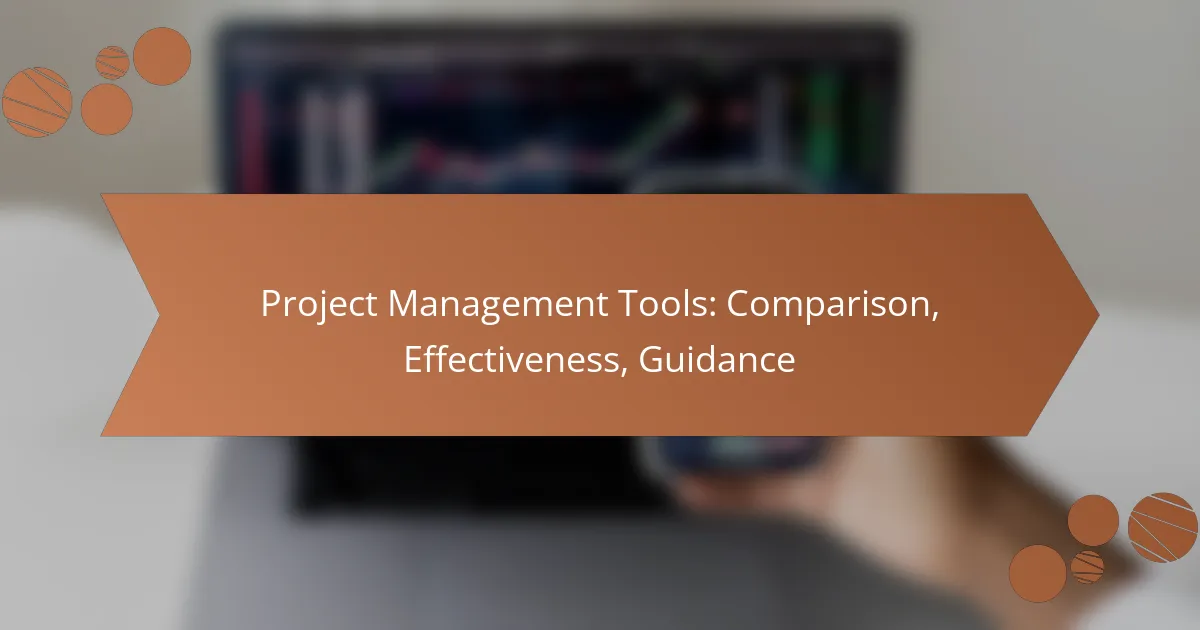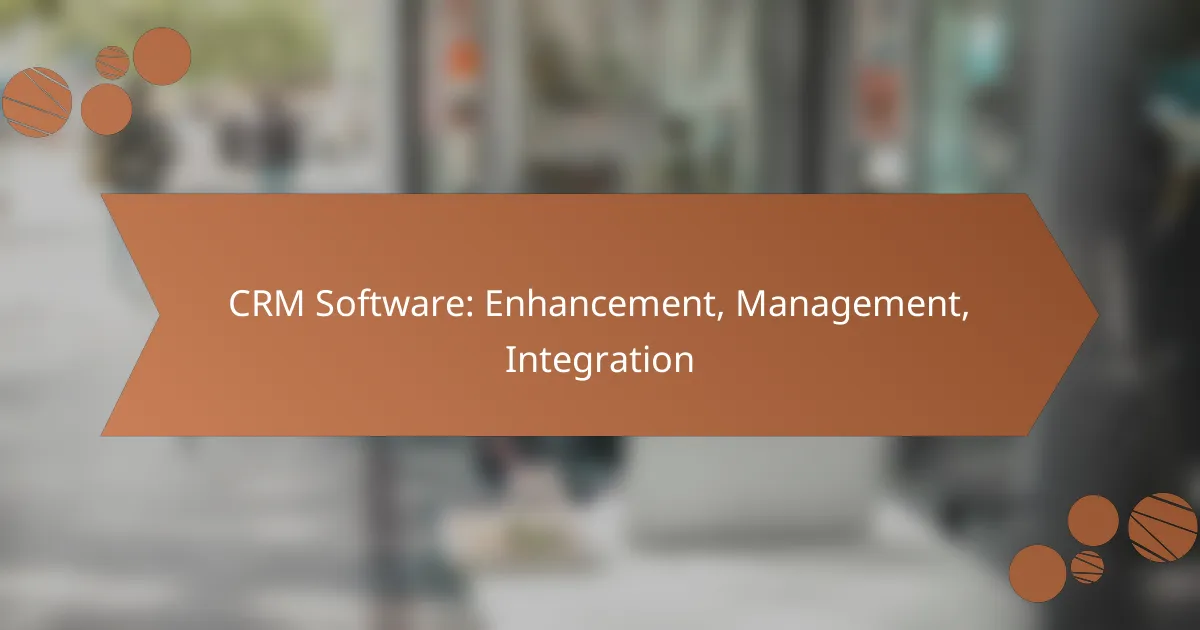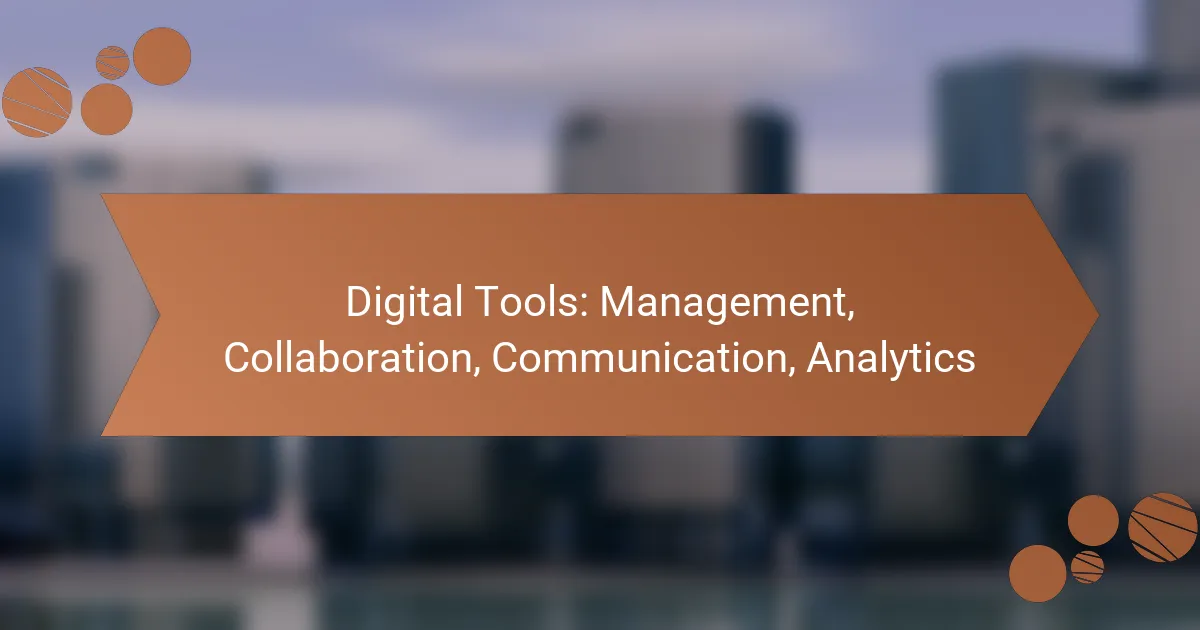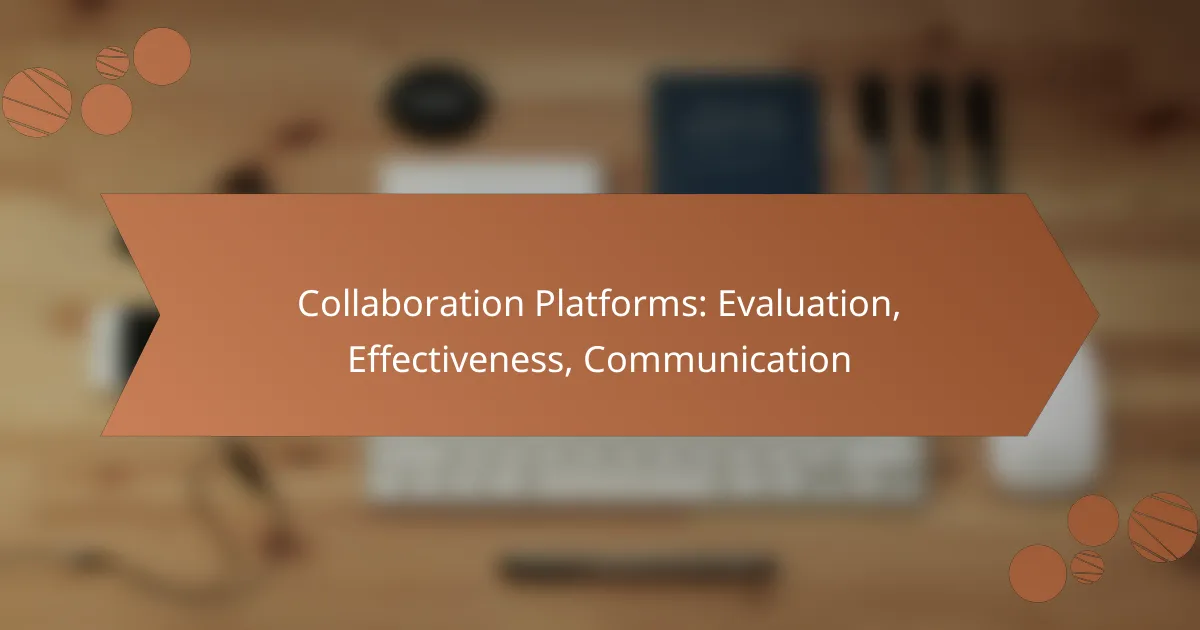In today’s fast-paced work environment, choosing the right project management tool is essential for enhancing team productivity and collaboration. Tools like Trello, Asana, and Jira offer various features that streamline workflows and improve project tracking, catering to diverse team needs. By centralizing tasks and optimizing communication, these tools ensure that teams remain aligned and focused on their objectives.

Which project management tools are the best for teams in the USA?
The best project management tools for teams in the USA include Trello, Asana, Monday.com, Jira, and ClickUp. These tools are designed to enhance collaboration, streamline workflows, and improve project tracking, catering to various team sizes and project complexities.
Trello
Trello is a visual project management tool that uses boards, lists, and cards to organize tasks. It is particularly effective for teams that prefer a simple, intuitive interface and a Kanban-style approach to task management.
Teams can easily create boards for different projects, add cards for tasks, and move them through various stages of completion. Trello’s flexibility allows for customization with labels, due dates, and checklists, making it suitable for both small and large projects.
Asana
Asana is a robust project management platform that offers task assignments, timelines, and project tracking features. It is ideal for teams that require detailed project planning and want to monitor progress through various views, such as lists, boards, and calendars.
Asana’s integration capabilities with other tools like Slack and Google Drive enhance its functionality. Teams can set priorities, deadlines, and dependencies, ensuring everyone stays aligned and focused on their goals.
Monday.com
Monday.com is a highly customizable project management tool that allows teams to create workflows tailored to their specific needs. It provides a visual interface with various templates for different industries, making it versatile for diverse teams.
With features like time tracking, automation, and reporting, Monday.com helps teams streamline their processes. Users can easily adjust their boards and workflows as projects evolve, ensuring adaptability in fast-paced environments.
Jira
Jira is a project management tool primarily used by software development teams for tracking issues and managing agile projects. It offers features like sprint planning, backlog prioritization, and detailed reporting, making it essential for teams following agile methodologies.
Jira’s integration with development tools like Bitbucket and Confluence enhances collaboration among technical teams. It is best suited for teams that need advanced tracking and reporting capabilities to manage complex software projects effectively.
ClickUp
ClickUp is an all-in-one project management solution that combines task management, time tracking, and goal setting in one platform. It is designed for teams looking for a comprehensive tool that can adapt to various workflows.
ClickUp offers features like custom statuses, views, and automation, allowing teams to tailor their project management experience. Its flexibility makes it suitable for teams of all sizes, from startups to large enterprises, ensuring that everyone can find a way to work efficiently.
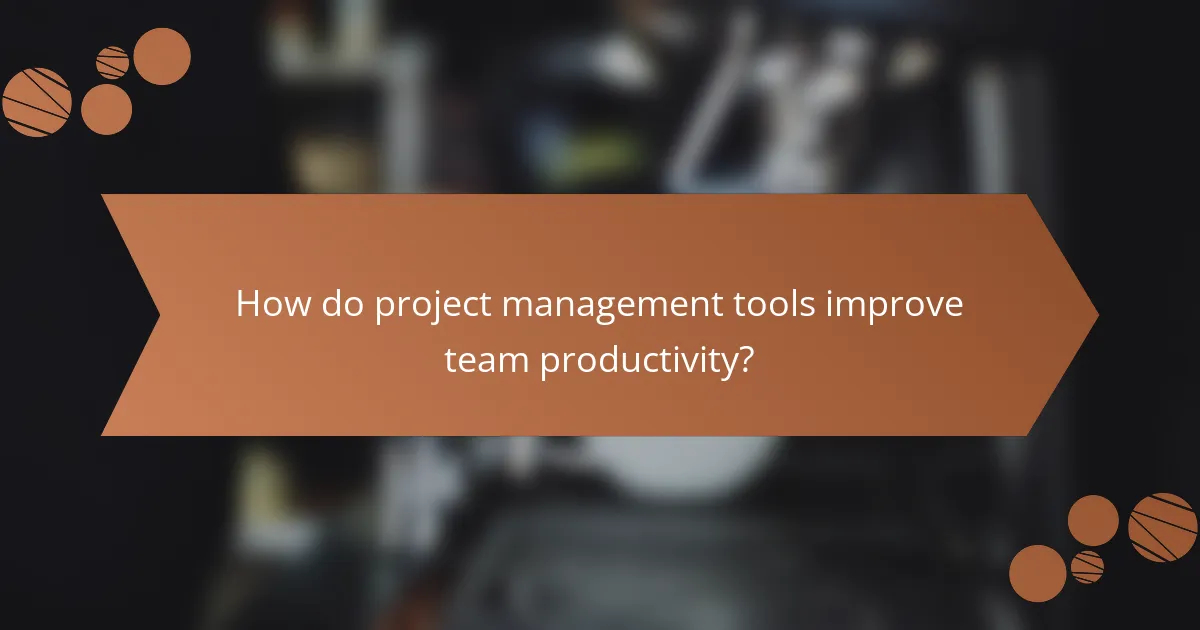
How do project management tools improve team productivity?
Project management tools enhance team productivity by centralizing tasks, improving communication, and optimizing resource use. These tools help teams collaborate more effectively, ensuring that everyone is aligned and focused on shared goals.
Streamlined communication
Effective communication is crucial for team productivity, and project management tools facilitate this by providing a centralized platform for discussions. Features like chat functions, comment sections, and notification systems ensure that team members stay informed and engaged.
For example, tools like Slack or Microsoft Teams integrate with project management software, allowing for real-time updates and discussions. This reduces the need for lengthy email threads and helps prevent miscommunication.
Task tracking
Task tracking features in project management tools allow teams to assign, monitor, and prioritize tasks efficiently. By visualizing tasks through boards or lists, team members can easily see what needs to be done and who is responsible for each task.
Utilizing methods like Kanban or Gantt charts can help teams manage deadlines and dependencies effectively. Regularly updating task statuses ensures that everyone is aware of progress and can adjust plans as necessary.
Resource allocation
Resource allocation is vital for maximizing productivity, and project management tools provide insights into how resources are being utilized. By tracking workloads and availability, teams can allocate tasks based on individual strengths and current capacity.
For instance, tools like Asana or Trello allow managers to see which team members are overburdened and redistribute tasks accordingly. This proactive approach helps prevent burnout and ensures that projects stay on track.

What are the key features to look for in project management tools?
Key features to consider in project management tools include collaboration capabilities, time tracking, and reporting functionalities. These elements help teams stay organized, monitor progress, and analyze performance effectively.
Collaboration tools
Collaboration tools facilitate communication and teamwork among project members. Look for features like shared workspaces, real-time messaging, and file sharing to enhance interaction and streamline workflows.
Effective collaboration tools often integrate with other applications, allowing seamless access to calendars, emails, and task lists. Popular options include Slack, Microsoft Teams, and Trello, which support various project management methodologies.
Time tracking
Time tracking features enable teams to monitor the time spent on tasks and projects, providing insights into productivity and resource allocation. Essential aspects to consider include ease of use, reporting capabilities, and integration with billing systems.
Tools like Toggl and Harvest offer simple interfaces for tracking hours, while also generating reports that can help identify bottlenecks or areas for improvement. Aim for a solution that allows for manual entry as well as automatic tracking for flexibility.
Reporting capabilities
Reporting capabilities are crucial for assessing project performance and making data-driven decisions. Look for tools that offer customizable reports, visual dashboards, and key performance indicators (KPIs) relevant to your project’s goals.
Effective reporting tools can highlight progress against deadlines, budget adherence, and team workload. Solutions like Asana and Monday.com provide templates and analytics features that can simplify the reporting process and enhance transparency among stakeholders.

How do pricing models vary among project management tools?
Pricing models for project management tools can differ significantly, ranging from free tiers to subscription plans and enterprise solutions. Understanding these variations helps organizations choose the right tool based on their budget and needs.
Free tiers
Many project management tools offer free tiers, allowing users to access basic features without any cost. These free versions typically include limited project management capabilities, such as task assignments and basic reporting.
While free tiers can be beneficial for small teams or startups, they often come with restrictions on the number of users or projects. It’s essential to evaluate whether the limitations will hinder your team’s productivity before committing to a free plan.
Subscription plans
Subscription plans are the most common pricing model for project management tools, usually billed monthly or annually. These plans often provide a range of features, including advanced reporting, integrations, and increased user limits.
Prices for subscription plans can vary widely, typically ranging from around $5 to $30 per user per month, depending on the features offered. When selecting a subscription plan, consider the specific needs of your team and how the features align with your project management goals.
Enterprise solutions
Enterprise solutions are tailored for larger organizations and often come with customized pricing based on the specific requirements of the business. These solutions typically include advanced features such as enhanced security, dedicated support, and extensive customization options.
Costs for enterprise solutions can vary greatly, often starting in the low thousands of USD annually, depending on the number of users and the complexity of the features. Organizations should assess their scalability needs and potential return on investment when considering an enterprise solution.
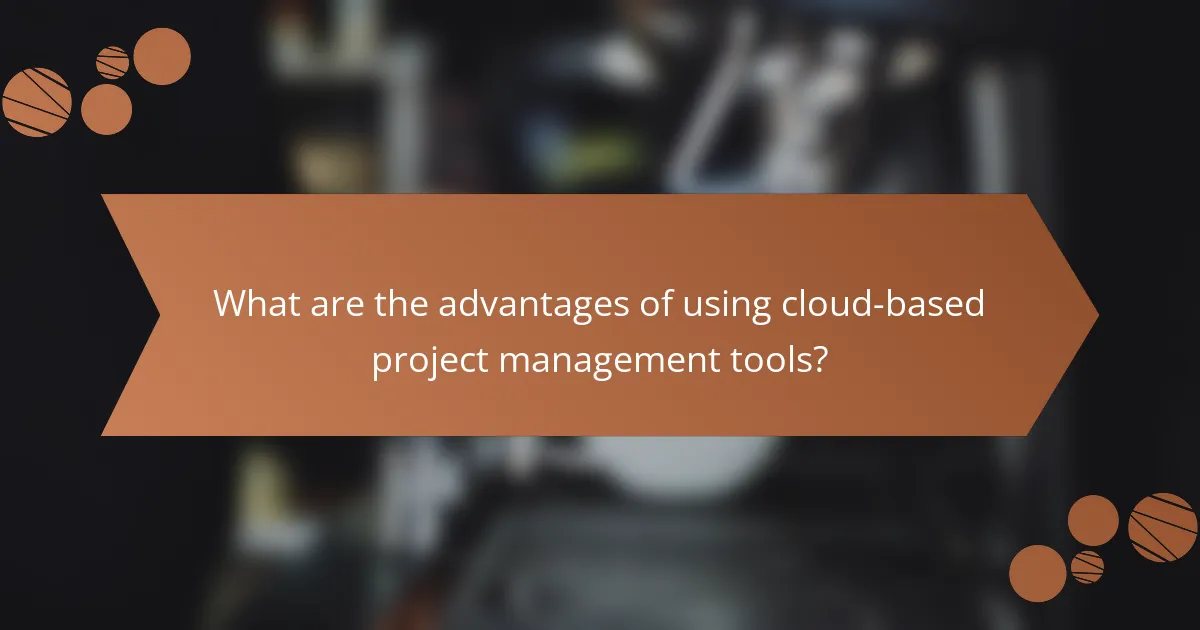
What are the advantages of using cloud-based project management tools?
Cloud-based project management tools offer flexibility, real-time collaboration, and cost-effectiveness. They enable teams to access project data from anywhere, streamline workflows, and reduce the need for extensive IT infrastructure.
Accessibility
Cloud-based project management tools provide easy access to project information from any device with an internet connection. This means team members can collaborate seamlessly, whether they are in the office, at home, or on the go.
For example, a project manager can update task statuses from a mobile device while attending a meeting, ensuring everyone stays informed. This level of accessibility can significantly enhance productivity and team engagement.
Scalability
These tools are designed to grow with your organization, allowing you to easily add or remove users and features as needed. This scalability means that whether you are a small startup or a large enterprise, you can tailor the tool to fit your specific requirements.
For instance, a company might start with a basic plan for a small team and later upgrade to a more comprehensive package as the team expands. This flexibility helps manage costs effectively while accommodating growth.
Automatic updates
Cloud-based project management tools typically include automatic updates, ensuring that users always have access to the latest features and security enhancements. This eliminates the need for manual installations and reduces downtime.
Regular updates can also introduce new functionalities that improve user experience and project efficiency. Teams benefit from these enhancements without the hassle of managing software versions or compatibility issues.
